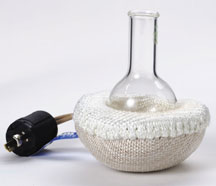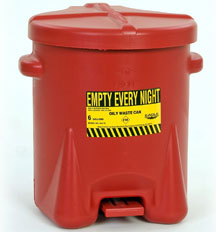| The Home page of ILPI's Safety Data Sheet (SDS) Resource, the leader in SDS information since 1995! | |
| The history and philosophy behind this resource. | |
| A curated collection of books and reference materials concerning Safety Data Sheets and closely related topics. | |
| Paste your plain text SDS into the SDS-Demystifier, and it will be converted into a hypertext-enriched document with links to detailed explanations of each key term. | |
| An extensive list of frequently asked questions about Safety Data Sheets including regulations, content, compliance, and more. | |
| A humorous take on Safety Data Sheet jargon. Fill in the blanks on our entry form to generate a personalized Unsafety Data Sheet to share with your coworkers. | |
| Since 1995, we've maintained this massive curated list of the best places to find Safety Data Sheets on the Internet. | |
| You are here! Way more than a glossary, this hypertext-enhanced resource covers hundreds of SDS-related terms and expert knowledge. Each entry includes both the SDS relevance and links to additional authoritative resources. | |
| Archived results of Safety Data Sheet related polls taken by some of our millions of site visitors | |
| The OSHA regulations behind SDS regulations, including the inspection guidelines and over 400 official interpretations letters under the Hazard Communication Standard | |
| Commercial suppliers of SDS authoring and management software as well as cloud compliance services. | |
| Commercial companies that will create SDS's for your specific needs as well as SDS translation companies. |

Safety signs, banners, and scoreboards? Get yours at Safety Emporium!
Definition
The autoignition temperature or auto self-ignition temperature of a substance is the temperature at or above which a material will spontaneously ignite (catch fire) without an external spark or flame.
Additional Info
Rags soaked with linseed oil are notorious for spontaneously (auto)igniting. The rags provide a high surface area for atmospheric oxygen to oxidize the hydrocarbon components, an exothermic (heat-releasing) chemical reaction. As the pile heats up, the rate of oxidation increases further until the temperature within the rag pile reaches the autoignition point. Such fires are unfortunately commonplace. For example, a 1991 fire started by the autoignition of 25 lbs of linseed oil-soaked rags gutted an office building and killed three firefighters.
Fire codes, therefore, require spontaneously combustible rags and other autoignitable materials to be stored in covered receptacles that limit oxidation and self-heating by excluding oxygen.
Other hydrocarbons such as turpentine, fish oil, lard etc. are also capable of autoignition. Always treat oily rags of any sort as a potential autoignition hazard. Rapid compression of some materials can also result in autoignition. For example, diesel engines do not use spark plugs to ignite the fuel-air mixture, but rather a rapid compression that raises the temperature to the autoignition point.
Autoignition temperatures are determined specialized equipment that is very similar to that used for flash point determinations.
SDS Relevance
Autoignition temperatures, are a required element on Safety Data Sheets and will be found on Section 9 (physical and chemical properties). If the term does not apply to the material (for example, a bag of cement can not autoignite), this should be listed as "not applicable (N/A)" or "none". However, note that HCS 2012 does not require testing, so the absence of a number does NOT mean the material lacks an autoignition temperature, it only means the company did not test the material or was too lazy to look up a value. Usually, such sheets will state "Not determined" or "N/D" for the autoignition temperature.
If an autoignition temperature is not listed, look for clues elsewhere on the sheet. Check Section 2 (Hazard(s) identifications) under Other Hazards. Examine Section 5 (fire-fighting measures) for comments under unusual fire/explosion hazards. Section 6 (accidental release measures) may also mention autoignition hazards. If you are suspicious of an unreported autoignition hazard on an SDS, consult SDS's for similar products from other manufacturers.
Storing a substance anywhere near its autoignition temperature is a severe safety hazard. Be careful storing substances in hot areas such as 1) sheds or cabinets exposed to direct sunlight, 2) adjacent to furnaces, hot water heaters or boilers or 3) places where flames or heat are often used.
Knowing a substance's autoignition temperature is also very useful in the event of a fire.

Reactions run more easily with laboratory heating mantles and temperature controllers from Safety Emporium.
Further Reading
- A handy list of Fuels and Chemicals - Auto Ignition Temperatures at The Engineering ToolBox.
- Autoignition at Wikipedia.
- More about Autoignition at ScienceDirect.
- MIT has a great writeup on Pyrophoric and Water-Reactive Chemical Safety that involves autoignition considerations.
- NFPA 921 - Guide for Fire and Explosion Investigations by the NFPA is your guide to fire and explosion incidents and rendering opinions as to the origin, cause, etc. of such incidents. Follow the Free Access link for more info.
- Mist Fires And Explosions - An Incident Survey includes two examples of autoignition.
See also: combustible, flash point
